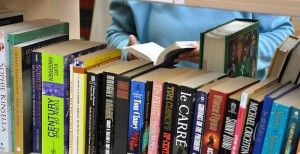the stella count: women in literature
The Stella Prize, in conjunction with Books+Publishing, a new source for the book industry, have compiled Australia statistics to reveal the number of women and men both being reviewed and doing the reviewing in newspapers and literary journals from 2012. This effort was also produced in a count for 2011, and, sadly, the count from 2012 reveals that not much has changed at all from the previous year’s statistics.
The results are charted in blue and red pie charts in order to demonstrate the clear differences. That is, that the men’s red pieces of pie overwhelmingly continue to dominate the women’s blue pieces of pie. When looking at the statistics from 2012 side-by-side with the statistics with 2011, they look remarkably similar, despite the publications being alerted to the problem of imbalance and having a full calendar year to amend their contributions and present a more balanced publication in terms of their literature representation.
This count has been inspired by the American organisation VIDA, for women in literary arts. Their counts are done in the exact same way, using representative pie charts to allow members of the public to put a visual to the inequality of representation in major American publications.
The count of Australian literature has been ensured to be as accurate as possible, with anthologies or multiple author books with both male and female writers being excluded so as not to provide any bias on either side. Any publication for which there was insufficient or unreliable data was also excluded. Therefore the results which the count has produced are as reliable a representation as there possibly can be.
These results include some rather startling statistics regarding some of our most well-known and respected publications, such as national publication Weekend Australian having males outnumbering females 70% to 30%; similarly with the Australian Financial Review having an 80% to 20% outnumbering the same way.
Credit where credit’s due, however, to monthly publication Good Reading for the second year in a row producing almost an equal representation of males and females.
Further from the comparison between the two years of study we can see that, despite the static nature of the overall results, the gender imbalance has either improved or deteriorated for several publications. For example, in 2011 Victoria’s Sunday Age showed nearly equal representation; yet in 2012, the male dominance increased by 17%. The Age weekday publication, however, improved its equality by 4%, therefore showing that the company is (hopefully) moving forward.
Chair of the Stella Prize Aviva Tuffield is not at all surprised by these results, and the lack of change from year to year:
‘As we’ve learnt over the past few years from VIDA’s statistics for their count of leading US and UK literary journals, the statistics don’t change quickly, or much at all,’ says Tuffield. ‘…there is still work to be done to make literary editors and beyond more aware of their unconscious biases and to raise awareness of the disparity in the gender of the authors of the books they review.’
It is true to say that we cannot expect grand-scale change over the course of only a year in these statistics. However, the lack of change is disheartening. As Tuffield says, it represents an underlying gender bias in many of Australia’s leading publications to do with writing by women. It is hardly a good sign for future Australian female writers trying to make a name for themselves based off of already limited exposure (due to the industry’s dominant presentation of ‘established’ and well-known authors). We can now only hope that these publications pay greater attention to the statistics from 2012, and aim to further and further reduce this inequality for 2013 and beyond.


